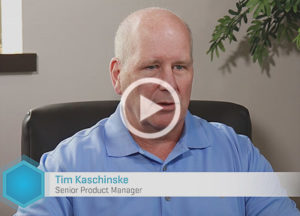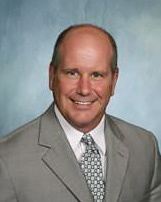By Tim Kaschinske, HealthStore® Senior Product Manager at BridgeHead Software
Reducing EMR clicks is important to strive for – it can save clinicians time and reduce frustration. To the untrained eye, the number of mouse clicks it takes to access a patient record might not seem like an important factor. However, for physicians, nursing staff and other care givers, this can have a huge impact on the speed and effectiveness of care delivery. And it’s not unusual for clinicians to be forced to access data from multiple health IT applications in order to understand a patient’s history. BridgeHead recognizes that optimizing what might, to some, seem a trivial action is crucial for saving time, maximizing efficiency, and providing the best experience for patients. This blog examines how every extra click affects the successful operation of your hospital, and how minimizing EMR clicks improves workflow and satisfaction for both physicians and patients.
What’s in a Click?
Clicking a mouse or pressing a key rarely takes longer than a second. Today, most people click or tap their devices thousands of times a day without thinking anything of it. But, in a busy healthcare environment, these actions add up. This is why reducing EMR clicks will be helpful.
Unnecessary clicks multiply over the course of a clinician’s shift. A physician seeing 20 patients in a day with 2 minutes wasted on clicking per patient adds up to 40 minutes of wasted time. This lost time has a significant opportunity cost, especially when you start scaling those lost minutes by the number of clinicians on staff over the course of a fiscal year. Imagine how many extra patients could have been seen and/or how much additional revenue could have been earned. And having fewer appointments available or running late on a schedule also harms patient satisfaction so critical in today’s healthcare market where ’reputation’ and ‘outcomes’ are a hospital’s primary currency.
Every Second Counts in Patient Care
A physician’s raison d’etre is to consult, diagnose and treat patients. The increased digitization of clinical workflow through the adoption of healthcare applications, such as EMRs, was designed to drive efficiency in care delivery. However, though these systems offer significant benefits, there have been unexpected consequences to their introduction. One issue that seems to arise time after time is the distraction that physicians experience when using software applications in a direct care setting. Physicians have consistently reported the challenges of switching focus and contexts back and forth from consulting with a patient and interacting with a computer system. Further, the more complicated the interface, the more distracted the physician becomes and, consequently, the more compromised the engagement with the patient.
The prevalence of clinical and administrative software in hospitals has led to physicians spending more time navigating these applications and less time communicating with patients. As well as the negative consequences for both the physician and the patient, outlined above; physicians, who are now tasked with learning and operating complex software applications, face an increasing risk of ‘burnout’.
EMR burnout is especially prevalent in older physicians who are less technologically savvy than their younger counterparts. A commonly cited example is prescribing where older physicians, who have been used to handwriting prescriptions, are now faced with unfamiliar electronic processes that they often find complex and more time consuming. Patients, witnesses to this frustration, feel alienated from these same doctors who now spend an extended time facing a computer monitor.
How to Create a Workflow That Puts Physicians First
As we’ve established, reducing EMR clicks will help physicians speed up their care delivery. In many hospitals, this stems from the need for clinicians to access multiple applications to access a patient’s full history. Interestingly, outside of the primary EMR, many of these systems are considered ‘legacy’. This is largely as technology changes over time and older systems are regularly replaced with newer ones. But, these ‘legacy’ applications persist as limited or no data from the older system is transferred across to the new one (and there are good reasons for this, such as data quality, compliance, and liability). The result is that clinicians are forced to ‘go searching’ for all of the patient data they need when consulting, diagnosing and treating a patient. This is clearly an overburdensome process and an inefficient use of time that would be better spent elsewhere.
Another identified issue is the lack of communication between the software developers that create clinical software and the medical professionals that use it. In essence, a developer is paid to create a system that serves a purpose, but they can lack background and context in the required general or specialist medicine and their respective clinical workflows.
In an ideal scenario, medical professionals would always be involved in the software development process, bringing these two fields together in a way that results in a more functional, efficient system. Building recognized clinical processes into the application can reduce over-engineered software, helping the physician to avoid unnecessary clicks through intuitive software design and resulting in a higher level of user acceptance and satisfaction. BridgeHead spends a lot of time in field, talking with prospects, customers, governing bodies and healthcare associations to better understand clinical workflows. By interfacing with the wider community, it enables BridgeHead to establish common user challenges and frustrations. These are then fed back to the product and engineering teams who, in turn, consider ways to proactively design the software to alleviate or mitigate against these issues. But, simplicity is key – the most common rudimentary tasks shouldn’t take dozens of clicks to complete; they should be quick and easy to accomplish.
Less Clicks, More Care
To imagine this process in action, consider a patient search in an application. If a clinician searches for a patient and the system starts to auto-complete the possible matching patient name, it serves as an aid to speed up the process. By contrast, if they were to enter data, such as birth date and/or patient name, and the system returns only one result yet still requires the user to select the patient, that equates to two wasted clicks alone, not to account for the time spent looking for the correct buttons to press.
While these small clicks may seem trivial, applications designed with physicians in mind recognize that wasted time amounts to wasted revenue, less time spent with patients, and greater frustration for physicians. BridgeHead’s HealthStore® has been designed specifically for healthcare systems as an easy to use and highly functional solution that addresses these issues by consolidating data from disparate systems (including legacy applications), making that data available to those that need it, when they need it, at the point of care delivery, quickly and efficiently, with the minimum number of clicks. This means physicians can spend more time face-to-face with their patients, and less time fumbling with IT systems.
Stop putting up with inefficient workflows and frustrated physicians. Contact BridgeHead today to learn how you can centralize your data by reducing EMR clicks and enable your people to deliver the best possible service to patients.
Are you tired of putting up with inefficient workflows and frustrated physicians?
In hospitals, access to patient data at the point of care is critical when treating a patient. But, in order to do that efficiently and effectively the data needs to be made available via the systems staff use everyday. In this customer story Harrison Memorial Hospital talks first hand about how they consolidated 6 disparate systems, centralized the data from those systems; and, ultimately, reduced EMR clicks, enabling their staff to deliver the best possible service to their patients.
Customer Story: Harrison Memorial Hospital →
Tim has been with BridgeHead Software for over 7 years, but has over 20 years’ experience in healthcare and data management. His responsibilities include listening to and understanding the challenges of hospitals, finding innovative ways to help solve their complex data management problems, all in a bid to support better healthcare delivery and make a positive impact in people’s lives. Tim has had senior roles in technology and development in organizations such as: Symantec, Agfa and Mitra Corporation prior to BridgeHead Software.





